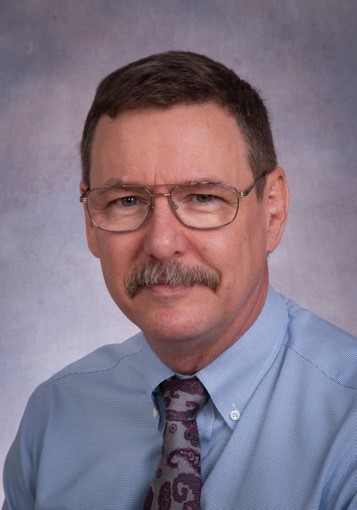 As one of only a handful of physicians who are developing focused ultrasound for pediatric applications, Michael Temple, MD, is a Canadian interventional radiologist who has done groundbreaking work using the technology to treat patients suffering from osteoid osteomas, which are painful but benign bone tumors.
As one of only a handful of physicians who are developing focused ultrasound for pediatric applications, Michael Temple, MD, is a Canadian interventional radiologist who has done groundbreaking work using the technology to treat patients suffering from osteoid osteomas, which are painful but benign bone tumors.
After conducting the first osteoid osteoma pilot study in North America, Dr. Temple and his team successfully treated 10 young patients and then published focused ultrasound treatment guidelines for this indication. Now, with the launch of the osteoid osteoma clinical patient registry, physicians and scientists will collect data needed to compare all of the treatment options to determine which treatments might be best for each individual patient, depending on the size and the location of their tumor. We conducted a Q & A with Dr. Temple to learn more about his focused ultrasound work and plans for the future (pediatric soft tissue tumors).
Background Information
Michael Temple, MD, is a pediatric interventional radiologist at the Hospital for Sick Children. He has an academic appointment as an Associate Professor of Vascular/Interventional Radiology at the University of Toronto, where he currently sits as the Earl Glenwood Coulson Interventional Radiology Research Chair.
Focused Ultrasound Work
Q. When and how did you get interested in focused ultrasound?
In 2000, I attended the Interventional MRI Symposium in Leipzig and was completely blown away when I heard Dr. Ferenc Jolesz discuss focused ultrasound. It was obvious to me that this technology could profoundly change the way the medicine is practiced and that the positive impact on patients would be immense. I still get chills when I think of that talk.
Q. What are your areas of interest in Focused Ultrasound?
I chose to focus initially on bone and, in particular, osteoid osteoma treatment because it seemed to be a good way to establish a clinical focused ultrasound practice at my institution. I have several new projects in mind, including development and assessment of targeted drug delivery in non-oncologic diseases.
Research Details
Q. Who are your team members?
There are multiple areas of focused ultrasound research being performed at SickKids, including thrombolysis, oncology treatment, and fetal interventions. Adam Waspe, PhD, (Biomedical Engineering) James Drake, MD, (Neurosurgery), Joao Amaral, MD, (Pediatric Interventional Radiology), and J. Ted Gerstle, MD, (Surgical Oncology) all take part in clinical and laboratory-based research. Maria Lamberti-Pasculli is the research nurse who coordinates and runs our clinical trials.
Q. What do you see as impediments to your success?
One of the biggest issues limiting the use of focused ultrasound technology at the current time is the inability of systems to adapt to patients. With transducers in a fixed position on an MRI table, the patient must be positioned to adapt to the transducer. We need stable but free transducers that can be accurately positioned to allow more patients to be treated.
Q. Does the Foundation play a role in your work?
The Foundation has been instrumental in the development of our clinical focused ultrasound program. Without the Foundation’s funding, we would not have been able to perform the osteoid osteoma pilot study or to develop the Focused Ultrasound Osteoid Osteoma Treatment Registry.
Clinical Details
Q. How many patients have you treated?
At the current time, we have treated 10 osteoid osteoma patients as part of the pilot study but are now offering it as a regular clinical option. We are in the process of enrolling our first two patients for a soft tissue ablation study, and that trial should occur in the next few months.
Looking Ahead
Q. Any follow-up funding opportunities?
We will need to assess the ongoing costs associated with running the osteoid osteoma registry and may consider seeking operational funds from the Focused Ultrasound Foundation or government sources such as the Canadian Institute of Health Research (CIHR).
Q. What comes next?
For the osteoid osteoma registry, the work of site and patient enrollment will now begin. In the future, I hope to expand the registry to include focused ultrasound soft tissue ablations and other treatments. For me personally, I want to expand my work to include ‘non-bone’ ablation/hyperthermia and targeted drug delivery.
Key Focused Ultrasound Publications
Hudson TJ, Looi T, Pichardo S, Amaral J, Temple M, Drake JM, Waspe AC. Simulating thermal effects of MR-guided focused ultrasound in cortical bone and its surrounding tissue. Med Phys 2018 Feb;45(2):506-519.
Temple MJ, Waspe AC, Amaral JG, Napoli A, LeBlang S, Ghanouni P, Bucknor MD, Campbell F, Drake JM. Establishing a clinical service for the treatment of osteoid osteoma using magnetic resonance-guided focused ultrasound: overview and guidelines. J Ther Ultrasound 2016;4:16. PMID: 27213043; PMCID: PMC4873984.
Research Education and Clinical Hub (REACH) Profile: https://reach.sickkids.ca/display/770733
Past Coverage
Osteoid Osteoma Treatment Guidelines Now Available June 2016
First Pediatric Bone Tumor Patient Treated with Focused Ultrasound in North America August 2014
News Flash: Teen’s Pain Relieved Through Focused Ultrasound August 2014
Fourth Quarter Research Awards: “Magnetic Resonance—Guided Focused Ultrasound for Noninvasive Pain Therapy of Osteoid Osteoma in Children – A Pilot Study” December 2013
